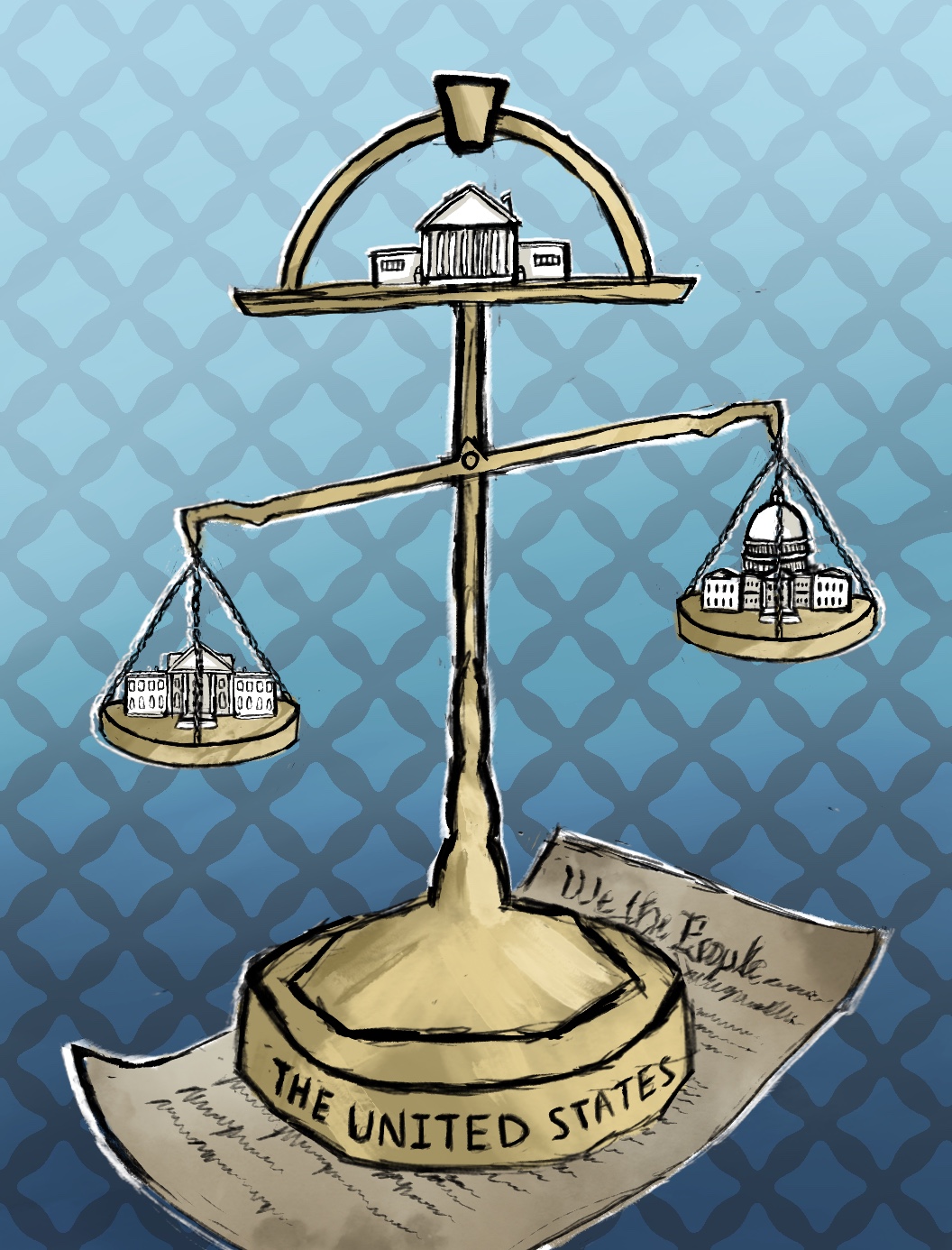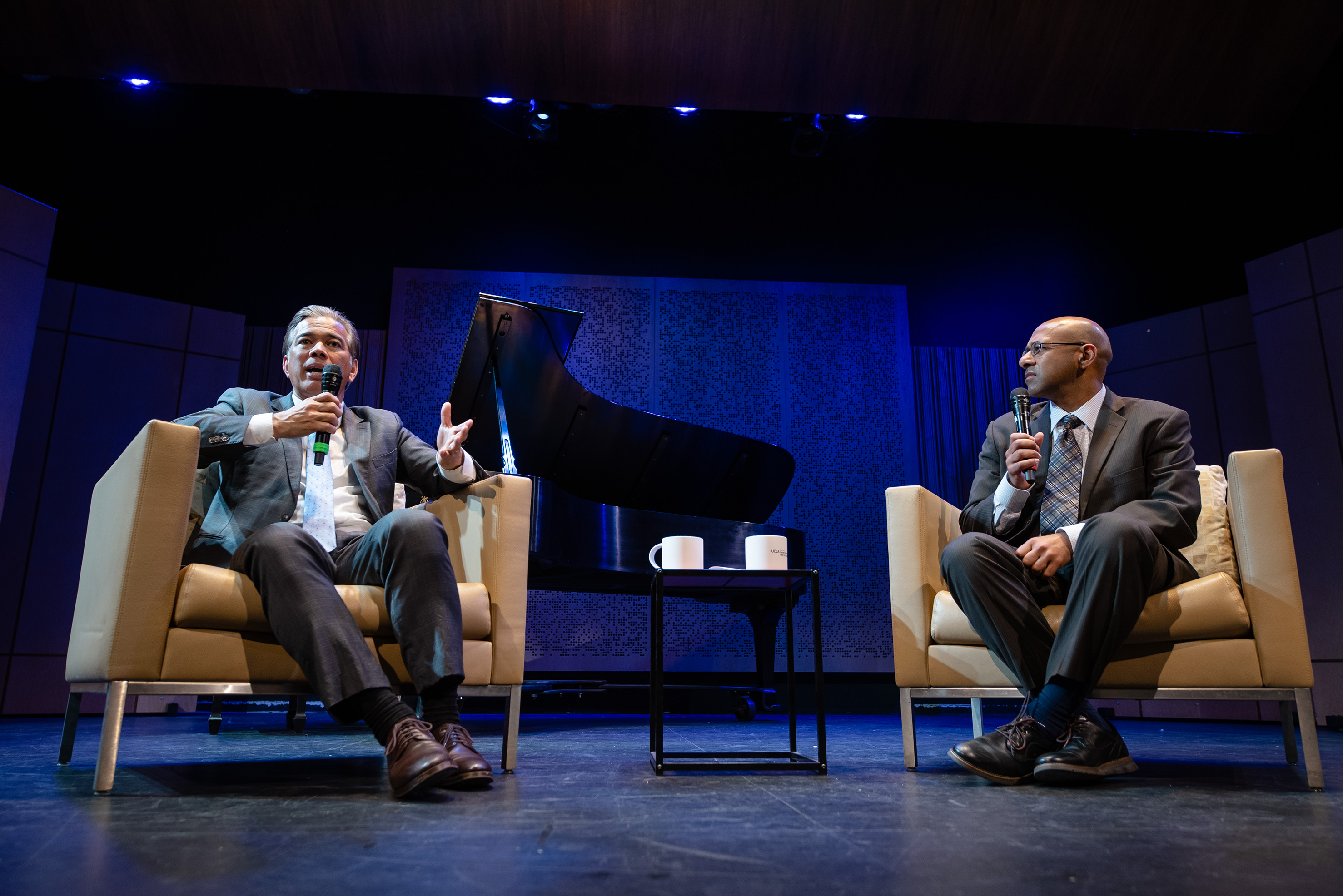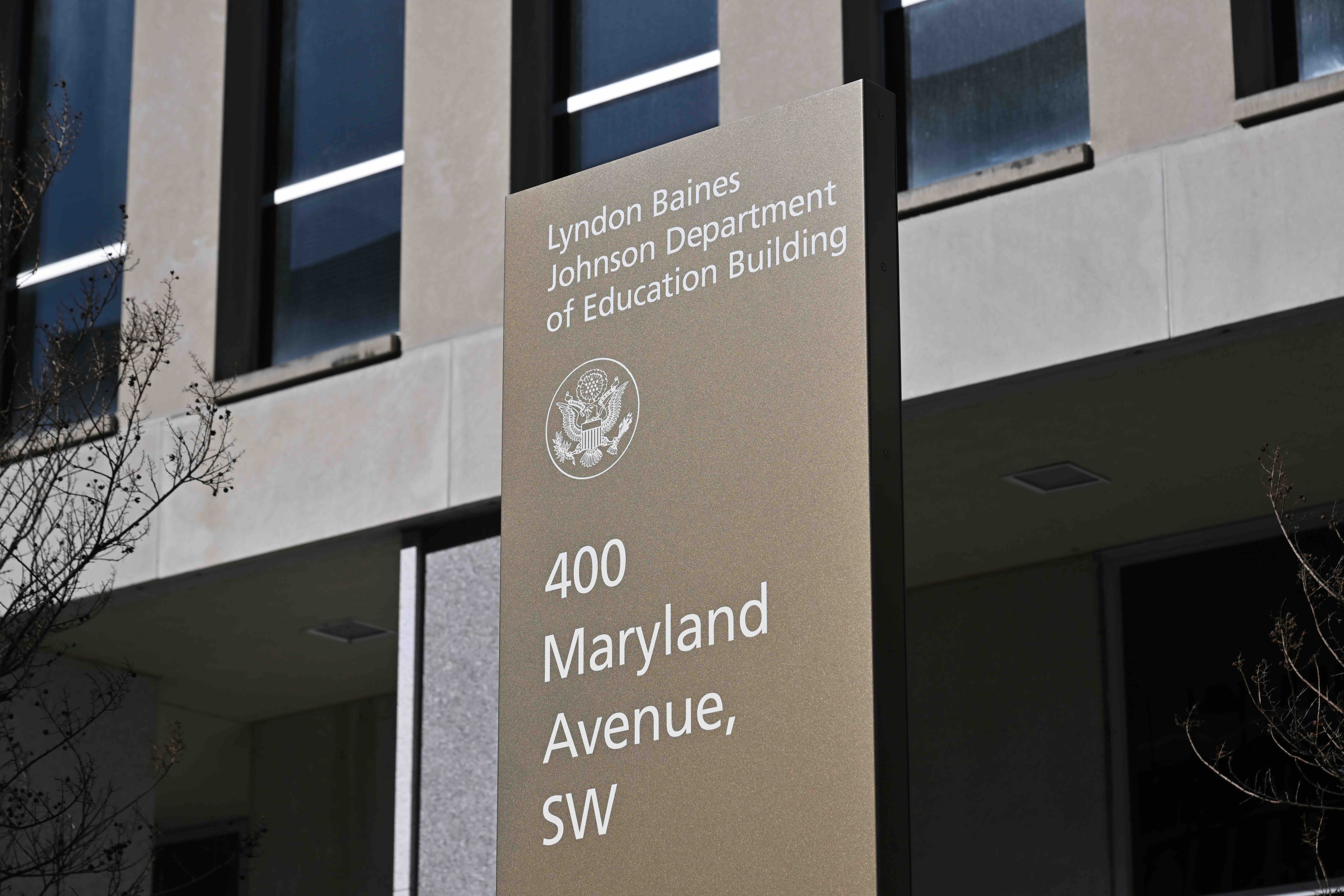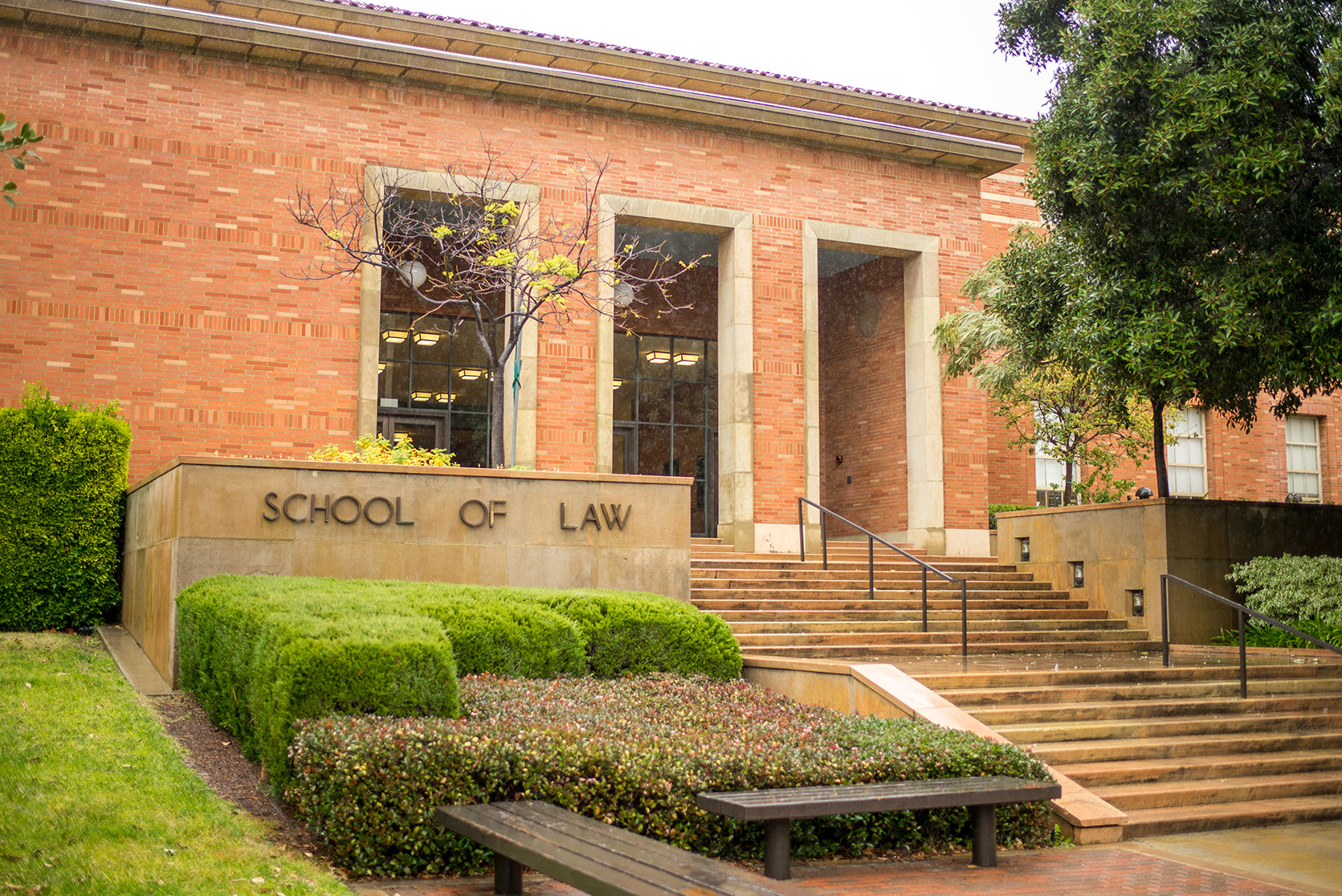Have the Trump administration’s actions put the US into a constitutional crisis?

(Christine Rodriguez/Daily Bruin)
By Savannah Cunningham
May 1, 2025 7:58 p.m.
Debates on the extent of government authority and the power of the United States Constitution have become commonplace in recent months.
The term “constitutional crisis” is used to describe a situation in which the fundamental principles of governance – primarily the Constitution in the U.S. – are threatened, undermined or unable to resolve political conflicts, according to the Maryland Law Review. Such crises can manifest in several forms, including overreach by government powers beyond constitutional limits or conflicting interpretations of the Constitution, according to FiveThirtyEight.
David Gans, a director at the Constitutional Accountability Center, said the current administration has threatened aspects of the U.S. Constitution. Since taking office, President Donald Trump has taken executive actions, including a pause on federal spending – violating Congress’ exclusive power to allocate government funds – and an order to ban birthright citizenship – contradicting the 14th Amendment. According to a February poll published by Quinnipiac University, 54% of U.S. voters expressed dissatisfaction with the current checks and balances system, which distributes power between the three branches of government to prevent any single branch from holding too much power.
“There’s a lot to really admire and respect about … not just the original Constitution but all the different ways that the American people have made a constitution that was fair, more equal, more democratic,” Gans said. “The fault is less the Constitution and more what actors are doing or not doing in its name.”
When the Constitution was first signed in 1787, specific and limited powers were allocated to the federal government and its branches, with any powers not expressly delegated to the federal government becoming the responsibility of state governments. The earliest interpretation of the Constitution led to dual federalism, also called dual sovereignty, a concept characterized by clear divisions of authority between state and federal government. In particular, the federal government managed areas such as taxation and interstate commerce, while the state governments managed responsibilities such as education.
Despite this increasing concentration of power in the federal government in the last century, former history professor Ellen DuBois said the states still hold significant influence over most legislation because of dual federalism. With the current administration pushing for state control over certain issues like abortion and education, DuBois said dual federalism can be effective in fighting for desired policies.
“This structure of dual sovereignty has allowed people challenging government policies a lot of flexibility, so that when the federal government is your enemy, you can go to the states, and when the state government is your enemy, you can go to the federal level,” DuBois said.
Abortion has shifted between being addressed at the state and federal levels. The 1973 Roe v. Wade court decision established national protection for abortion, while the 2022 Dobbs v. Jackson Women’s Health Organization decision reversed regulation power back to the states.
A historical example of dual federalism creating a constitutional crisis is the Civil War in 1861, when the Southern states seceding resulted in questions about the rights of states to leave the Union and whether those rights challenged the fundamental principles of the Constitution.
Aside from conflicts between federal and state governments, tensions between the executive, legislative and judicial branches within the federal government can also create constitutional crises.
History professor Michael Meranze said the power of the executive branch has notably increased in the last half-century, particularly during periods such as the Cold War and the global war on terrorism in the early 2000s, when Congress ceded more power and allocated more funds to the executive branch, which oversees the military, among other agencies. However, he added that historical attempts to expand federal power, especially from the president in the executive branch, did not happen without a response from the other branches.
For example, former President Richard Nixon attempted to halt federal spending for projects approved by Congress to save money for taxpayers in 1973, using impoundment powers – the president’s ability to withhold or delay spending on appropriated funds. Congress pushed back against this, passing the Impoundment Control Act of 1974 to place stricter regulations on presidential impoundment, demonstrating the government’s checks and balances system.
Similarly, state governments and federal courts are currently stepping in to defend constitutional limits by suing the Trump administration over its actions.
AP News has tracked nearly 180 lawsuits from states and national organizations challenging the Trump administration’s various executive orders on constitutional grounds, addressing issues ranging from birthright citizenship and immigration to federal funding and worker cuts. Despite pushback, the Trump administration has continued to violate constitutional principles, such as defying a judicial order to unfreeze billions of dollars in federal aid, according to NPR.
Gans said current times necessitate more education on the government and systems that define U.S. democracy.
“We’re in a period of conflict and struggle over our constitutional system, and the question is not only for lawyers and for courts, but for everyone,” Gans said. “All people have an important say in this fight over the meaning, the enforcement, whether our constitutional promises will stand firm.”





